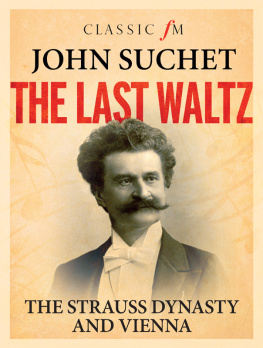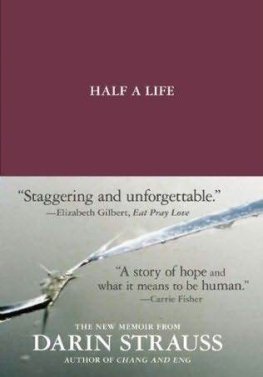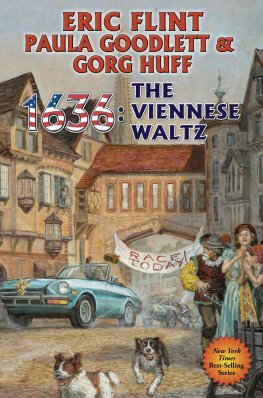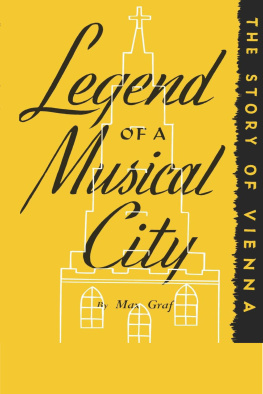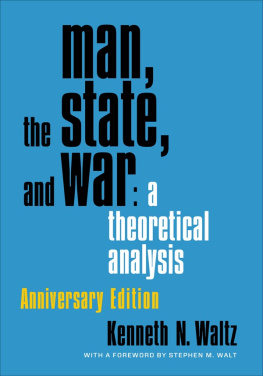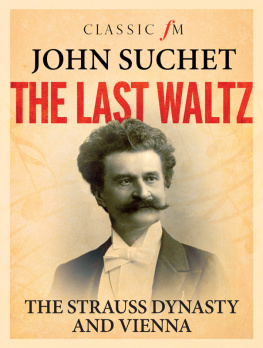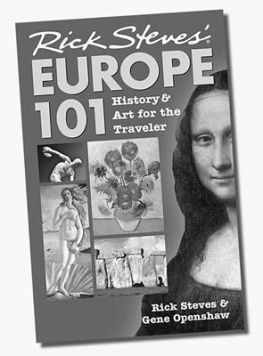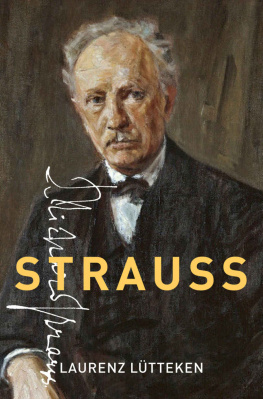Afterword
I wrote this book for two reasons.
Vienna was the first place I ever went abroad without my parents. I was seventeen. It was a trip organised by the University of London (I cant remember how I found out about it). I had just started learning German at school, had never been so excited about learning anything in my short life, and pestered my dad until he allowed me to sign up.
I went to Vienna, and fell in love with the city and its music. Everywhere we went, the sounds of Strauss wafted on the air. I was entranced. (We went to a performance of Beethovens Fidelio at the Vienna State Opera and I fell asleep.) On the final morning we were received by the mayor of Vienna in the great neo-Gothic Rathaus, and I was chosen to make a short speech of thanks in German. (It had been written for me, I stayed up the night before learning it so I would not have to read it, can still remember it word for word, and have been known to deliver it to anyone who upsets me enough.)
I knew nothing then about the dark side of the city, nor anything of the history of the Habsburg empire and its obliteration by the First World War. But my imagination was ignited, and remains brightly lit to this day.
That is the first reason. The second is that I do not believe such a book as mine exists, certainly not in the English language. Those that do are for the most part several decades old, and narrowly based.
Given the enduring popularity of the music of the Strauss dynasty, there are surprisingly few full biographies. In fact the word few is itself an overstatement. Despite the full resources of the Internet, I have found just one.
It is The Strauss Family, by Peter Kemp (The Baton Press, 1989), part of the series The Illustrated Lives of the Great Composers, available now second-hand only on www.amazon.com for $0.96 and www.amazon.co.uk for 0.01.
I had the good fortune to meet Peter Kemp when I was asked to make the address at the annual dinner of the Johann Strauss Society of Great Britain in October 2003. He presented me with a copy of his book, which he told me ruefully had gone out of print soon after it was published in 1989. I knew at the time how lucky I was to have it in my possession.
It is an extraordinarily detailed book, interweaving the lives of the Strausses with their music, and I readily acknowledge my debt to it in writing my own book. What it does not do, though, is relate those lives to the city of Vienna and the turmoil of the Habsburg decline.
Nor do any other books on the Strausses that I have been able to find in all cases they are deliberately narrow in scope.
The fullest account of their lives comes in Johann Strauss: A Century of Light Music, by Heinrich Eduard Jacob (Hutchinson & Co., 1940). It is comprehensive, but again has little to offer on the turmoil of the nineteenth century and is inevitably dated.
The Viennese-born author Hans Fantel draws heavily on Jacob for his The Waltz Kings: Johann Strauss, Father & Son, and The Romantic Age (William Morrow & Co., 1972). This is good on the two Johanns, father and son, but has little on Josef and Eduard, and has more reflections from an American-based author longing nostalgically for his homeland than real history.
So we come to the more narrowly based books from the world of academia. The most recent is The Legacy of Johann Strauss: Political Influence and Twentieth-Century Identity, by Zo Alexis Lang (Cambridge University Press, 2014). This is a doctoral study by Professor Lang of the Music Department of the University of Florida, and as its title suggests is more concerned with how Strauss was perceived in the twentieth century than in giving an account of his life. It is strong on the familys Jewish ancestry and the appropriation of the music by the Nazis and their attempts to quash that Jewishness.
Johann Strauss: The End of an Era, by Egon Gartenberg (The Pennsylvania State University Press, 1974), is strong on the social history of Vienna, less so on the personal lives of the Strausses. The last third of the book concentrates on operetta in the twentieth century. I confess to having found it a dry read. Like the Kemp, it is available on Amazon second-hand only for cents or pennies.
Camille Crittenden was Associate Director of Institutional Gifts at San Francisco Opera when she wrote Johann Strauss and Vienna: Operetta and the Politics of Popular Culture (Cambridge University Press, 2006), as part of the Cambridge Studies in Opera series. She is, obviously, strong on the operettas and how they fitted in with the social life of Vienna, with barely a mention of the waltzes and polkas, and very little on the lives of the Strausses themselves.
When we come to the history of the Austro-Hungarian empire and the decline and fall of the House of Habsburg, there is a wealth of historical material with copious analysis of the reign of Emperor Franz Josef, though few try to get inside the mind of a man who lived through so many personal traumas. I have not found a single one with more than a passing reference to Johann Strauss the younger.
For a general history of Vienna, I have used Vienna: Legend and Reality, by Ilsa Barea (Secker & Warburg, 1966). Excellent on the history of the city, as you would expect from a native Viennese (ne Pollack, she died in 1970), but very little on the Strauss family.
The life of Empress Elisabeth (Sisi) is well documented, though more in pictures than words. I have found two biographies in English, The Reluctant Empress, by Brigitte Hamann (Alfred A. Knopf, 1986), and The Lonely Empress, by Joan Haslip (Phoenix Press, 1965). Two rich books of pictures are Empress Elisabeth of Austria 18371898, The Fate of a Woman Under the Yoke of the Imperial Court, by Renate Stephan (Austria Imperial Edition, 1998), and Sissi, The Tragic Empress, by Ludwig Merkle (Stiebner Verlag, 1996).
I found just a single book with any detail on the shadowy life of the emperors mistress, Katharina Schratt. It is The Emperor & The Actress, The Love Story of Emperor Franz Josef & Katharina Schratt, by the empresss biographer Joan Haslip (George Weidenfeld & Nicolson, 1982), and I have used it extensively in my account of the relationship.
Particularly good on the difficult, and tragic, life of Crown Prince Rudolf is A Nervous Splendor, Vienna 18881889, by Frederic Morton (Little, Brown, 1979), a narrow account of two turbulent years in Vienna, written by a native-born Viennese now resident in the United States.
Finally two (to me) priceless little picture books that I found in Vienna many years ago, each stocked full of photographs of the old city, many of which I have reproduced in this book. They are Wien, Innere Stadt 18501860 (Verlag fr Photographie, 1995), and Das Wiener Kaffeehaus 18701930 (H. Seemann und Chr. Lunzer, 2000).
If a picture is worth a thousand words, this is a very long book indeed.
Index
Page numbers in italics refer to illustrations.
A
Abbado, Claudio
Adam, Adolphe
Adler, Guido
Albert, Prince
Alexander II, Tsar
Amon, Franz
Auber, Daniel
B
Bad Ischl
Barenboim, Daniel
Beethoven, Ludwig van
Berlioz, Hector
Biedermeier era
Blumenthal, Oskar
Bonaparte, Napoleon
Boskovsky, Willi
Boston
Brahms, Johannes
Britain
Bruckner, Anton
Buccleuch and Sutherland, Duke of
Blow, Hans von
Byron, Lord
C
Cadogan, Countess of
cafs
Cambridge:
Duchess of
Duke of
Caspar, Mizzi
Chalupetzky, Henriette see Strauss, Jetty

